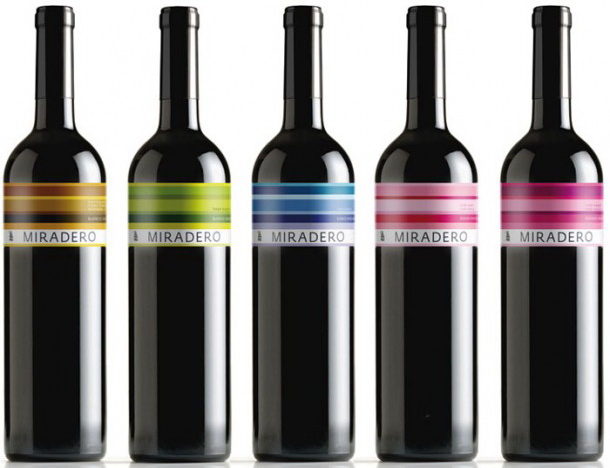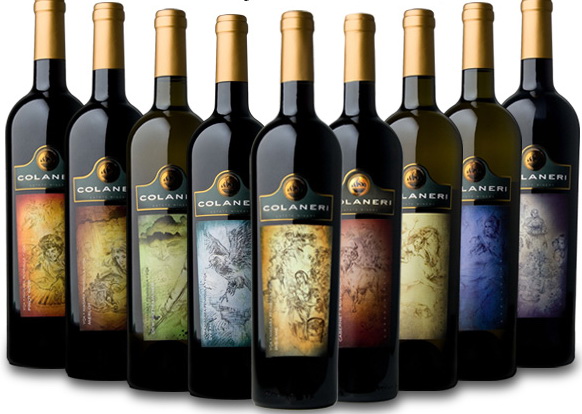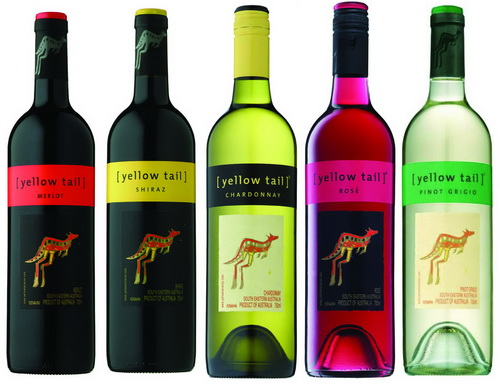Continued from Part 2 of Wine Label Art
That’s not a bad deal when you consider that the latest vintage retails for about $600 a bottle, and increases with maturity.
Many other wineries around the world have engaged artists to design their labels, including several from Canada, most notably Hillebrand Winery Estates and Colaneri Estate Winery in Niagara, and 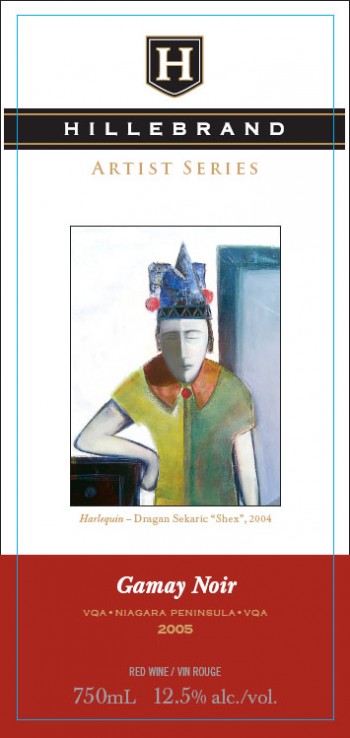 Calona Vineyards in the Okanagan Valley.
Calona Vineyards in the Okanagan Valley.
Stylistically these images range from the traditional (château on a hilltop) to impressionist (sun-dappled pickers in a field) to modern (bold contrasting colors, strong lines).
Other elements, such as embossed or gold-coated printed labels, help to give a bottle a distinctive look.
One of the most important aspects of wine label design is colour. Industry insiders know that people tend to gravitate toward dark, rich colors such as red and blue rather than to pastels.
Perhaps that’s why champagne maker Veuve Clicquot actually patented the vibrant egg-yolk yellow of its label.
That color is so identified now with the premium bubbly that no other wine producer can use it.
The challenge is to express not only the character of the wine, but also of the place where it’s made on a canvass that measures just four inches by three and a half.
But with a large imagination, that small space is enough. French labels, for example, are usually austere and subdued, reflecting the restraint and elegance of the country’s wines.
By contrast, the bold, vivacious colors of Australian labels reflect its high-alcohol, fruit-forward red wines, such as the wildly-popular shiraz.
One of the most successful Down Under wines is Yellow Tail, which features a stylized yellow kangaroo on a black background.
You might think that putting a kangaroo on a bottle of Australian wine is about as clever as slapping the Statue of Liberty on an American wine. But it seems to be working: in 2003, just two years after it was launched in the U.S., the $12 wine was America’s number one imported wine. It has also performed well in Canada since being introduced here.
Its success has been such that other winemakers have hopped on the beastie bandwagon. In fact, the Australian section of the wine store should be renamed the glass menagerie.
There’s Crocodile Rock, after the Elton John song, launched by McGuigan Simeon Wines. The company also makes Black Swan with color-coded labeling tied to the kind of grape used in the wine. There’s also Little Penguin, made by Treasury Wine Estates.
The label is still important even after we’ve bought the wine, whether we’re giving it as a gift or taking it to a dinner party. It’s just about the only product that we put on the dinner table in its original package.
The label becomes a mini-billboard, with a message to our friends about our taste and our budget.
As for the quaffable critters, they’re now crawling over the wine shelves around the world: Toad Hollow, Firesteed, Wild Horse, Iron Horse, Dog Point, Bad Dog, Fat Cat and the qui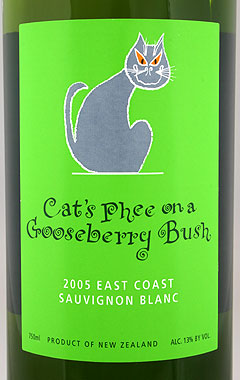 rky Cat’s Pee in a Gooseberry Bush—a joking reference to the classic aroma of sauvignon blanc.
rky Cat’s Pee in a Gooseberry Bush—a joking reference to the classic aroma of sauvignon blanc.
Those animal labels are easy to remember when you want to buy that delicious purple lizard wine again. More importantly, they appeal to women, who buy most wine—and who, apparently, are suckers for a cuddy little creature.
The Californian Frogs Leap label is now part of the collection at the Smithsonian Museum of Modern Art because of its perfect Zen garden dimensions and its contrasts, lines and colors.
(Perhaps, too, the curator liked the label’s humor: “Time’s fun when you’re having flies.”)
Meanwhile, on the other side of the pond, Duckhorn Winery commissions an artist every year to paint two ducks for its label.
And while it may not be ironic that you can buy the print of the label more easily than you can the wine itself, it certainly is a …
Read Part 4 of Wine Label Art


